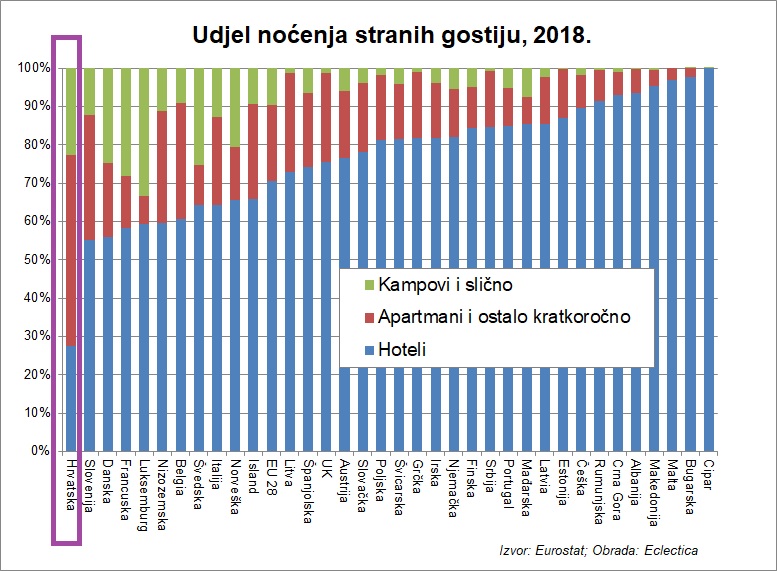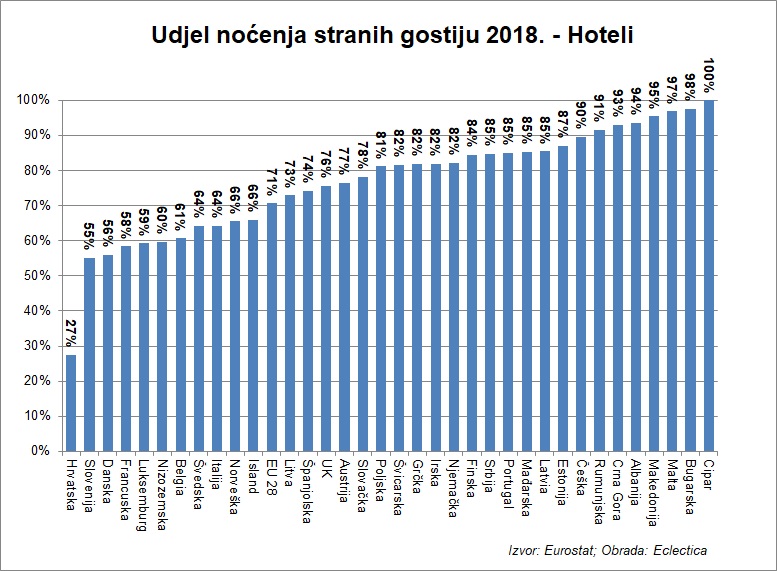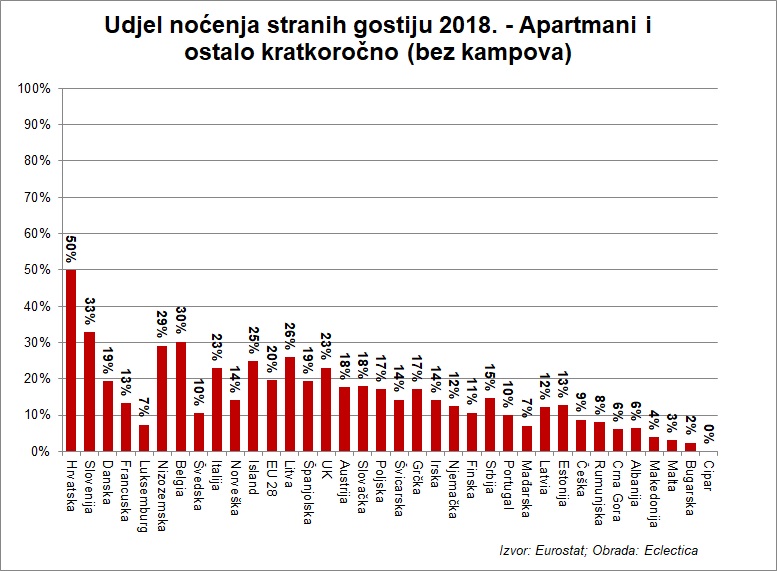Foreign Tourists Spend 475 Million Euros in Croatia
When not discussing daytrippers and cruise ship passengers, foreign tourists generally spend huge amounts in Croatia, particularly during the summer months. It seems however that Croatia's desire for all-year tourism and a stronger pre and post-season are coming to fruition as the numbers look promising.
As Poslovni Dnevnik/Marija Crnjak writes on the 4th of July, 2019, revenues from foreign tourists in Croatia increased by 5.4 percent in the first quarter of this year compared to the same period last year, according to data from the Croatian National Bank (CNB/HNB).
During January, February and March 2019, tourism revenues from foreign guests amounted to a massive 475 million euros, which is 25 million euros more than was recorded during the same period of 2018. This is more than twice the growth compared to the first quarter of last year, when tourism made 54.3 million euros more than it did back in 2017, which was mainly thanks to last year's earlier Easter.
The increase in revenue in this first quarter of this year matches the increase of foreign tourists' arrivals in Croatia, by almost five percent, while in March and and Easter weekend in the first quarter of last year brought 27 percent more tourists to Croatia.
Tourism Minister Gari Cappelli is pleased with the results of 2019's first quarter.
''The government places great emphasis on the growth and development of the quality of tourism, and significant advances are most noticeable through continuous revenue growth. In the mandate of this government, revenues for the first quarter increased by 23 percent. It's also proof that our policy of strengthening the pre-season yields positive results, not only in terms of tourist traffic, which grew by 36 percent in the same period, but also in tourist spending,'' stated Minister Cappelli.
Throughout 2018, foreign tourists realised slightly more than 10 billion euro in revenue in Croatia, and in the first quarter of the same year, 450.2 million euros in revenue was realised. Shortly before the beginning of the current government's mandate, back in 2016, the first quarter brought Croatia tourism revenue in the amount of 390 million euros, which was 4.5 percent of the total annual tourist income realised by foreign tourists, amounting to 8.6 billion euros.
In that same year, foreign tourists made up 448,000 arrivals during the first quarter, compared to 626,000 in the first three months of this year. Thus, during the mandate of the current Government of Croatia, the first quarter was strengthened by 178 thousand arrivals of foreign tourists and 85 million euros in foreigner tourist income in three years.
What exactly the physical results of the second quarter, which will give a more accurate image of this year's pre-season, are still unknown.
Make sure to follow our dedicated lifestyle page for much more on tourism in Croatia.
Big Capital - Blessing or Curse for the Glamorous Croatian Coast?
As Nenad Bakic/eclectica.hr writes on the 23rd of June, 2019, for a long time now, it's been well known in Croatia that big capital and the Adriatic coast go hand in hand.
In general, Croatia has long been ''heroically fighting against neoliberal capitalism'', and rather successfully at that. The only issue with that is the fact that the premise was wrong because it was just as "well known" that such a type of capitalism had already stepped ''into bed'' with us and for some, it was quite a comfortable situation, although the real truth in itself was completely different.
Not to take away from the many entrepreneurs and invention this country has given to the world, Croatia continues to take many an unimpressive title when it comes to anything outside of natural beauty, which is something we can't influence (thank God). When speaking economically, Croatia is the least free country in the European Union behind Greece, and of course, Croatia is rather tragically lagging behind in almost every single significant aspect, and people are leaving in their droves, and that demographic leaking tap isn't going to stop dripping.
Croatia's struggle against "big" capital in the tourism industry was a wrong move, though perhaps of a somewhat visionary nature.
The result of the situation with big capital on the Croatian coast is the following: The coast is concreted over by apartments, and the share of Croatian hotel accommodation is half the size of the of that of the next EU country.
This chart shows the share of accommodation for foreign tourists, according to overnight stays spent:

Specifically, for hotels it looks like this:

As you can see, the share of accommodation in Croatian hotels is exactly 1/3 of the European Union average.
For apartments, things look like this:

Bakić adds the fact that it is regularly forgotten that Croatia has an incredibly unique advantage, and it's reachable by some 100 million people by car (the captive market). In addition, real tourism is a capital and a work-intensive activity, and because of the Croatian shortage of labour which is a result of the demographic crisis and issues with the payment of living wages, hotels are up on their feet. For apartments, this is much less important.
You can follow more from Nenad Bakić on his Eclectica website.
Make sure to follow our dedicated lifestyle page for more information on Croatian tourism and much more.

